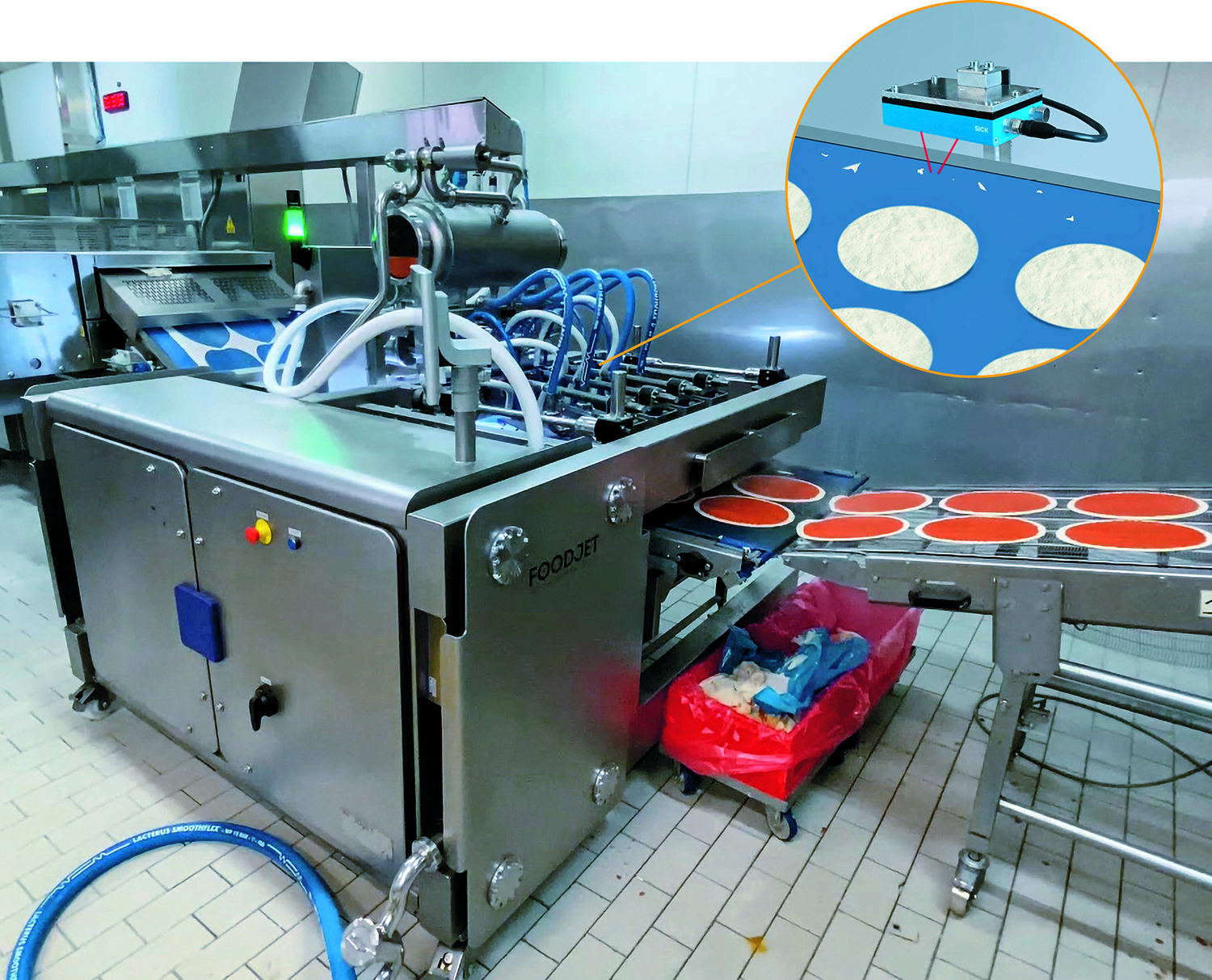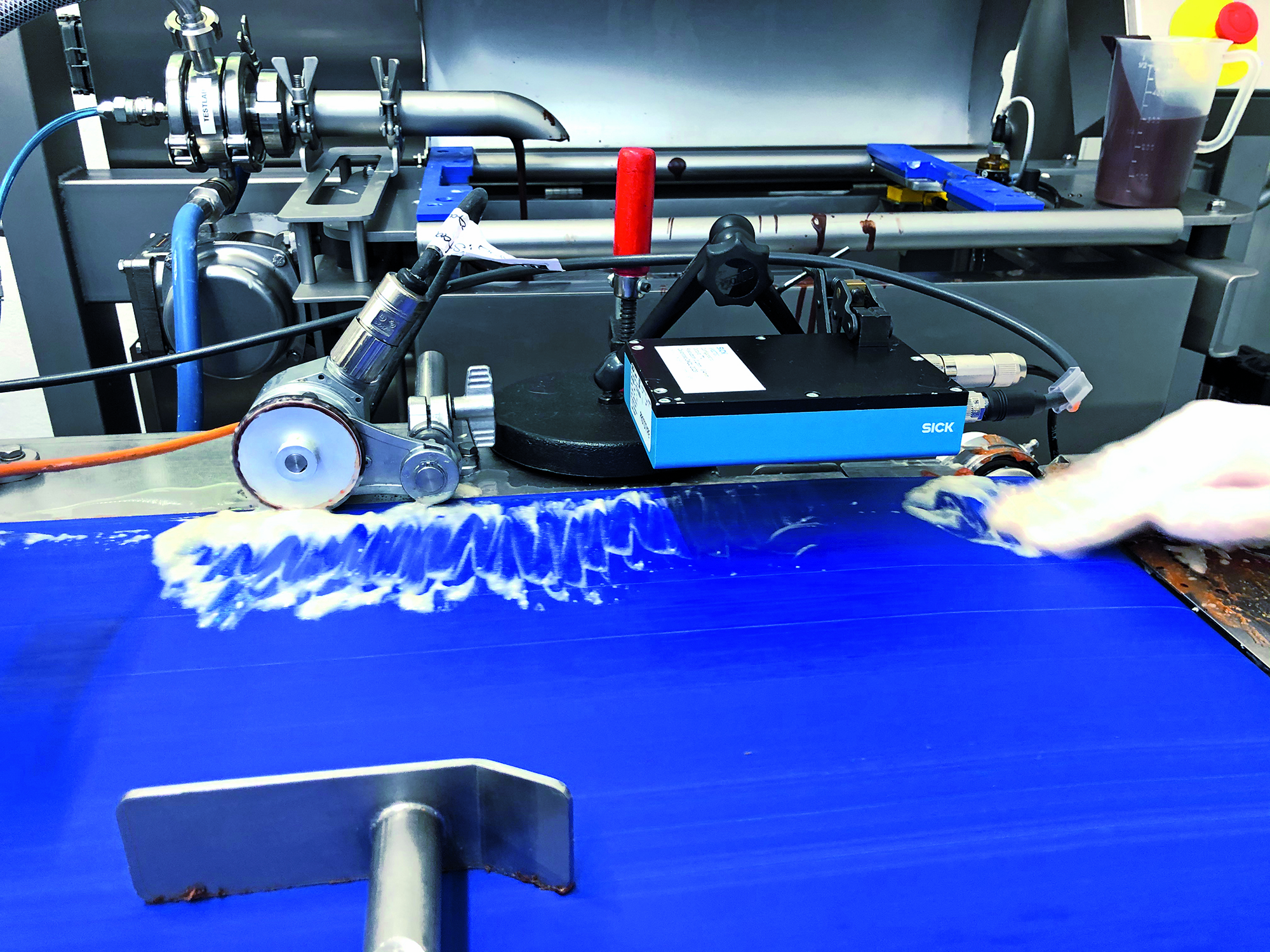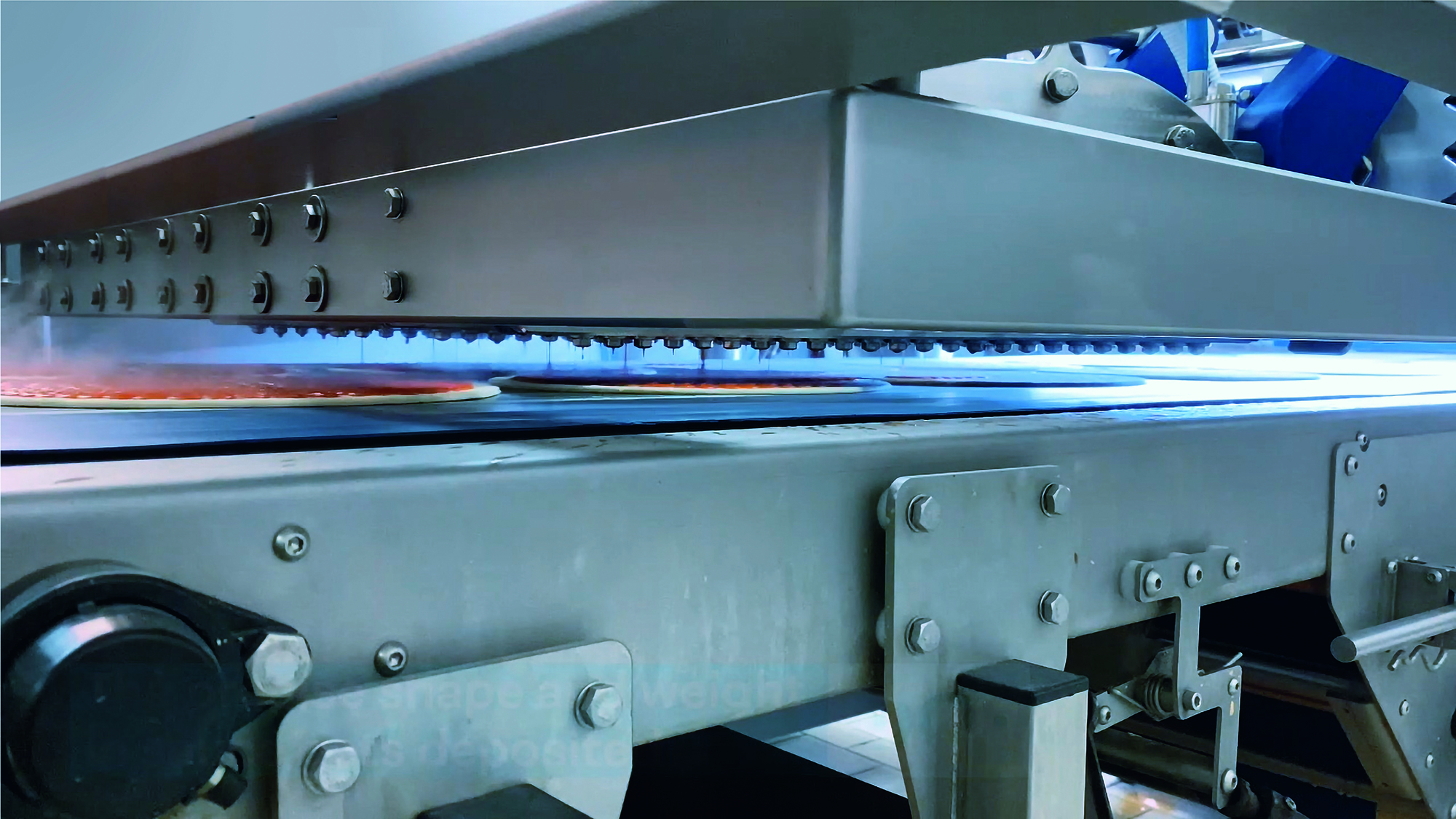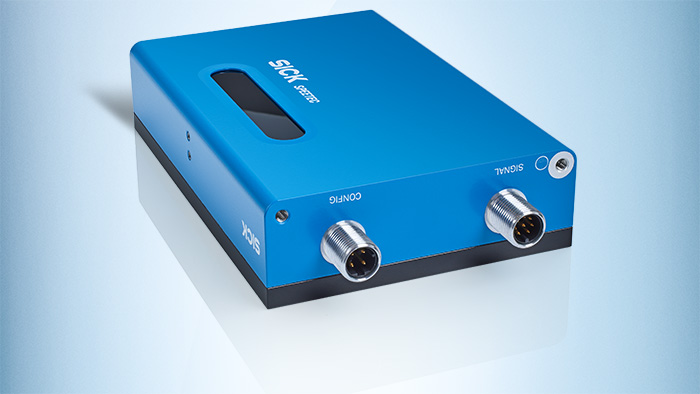FoodJet uses non-contact measurement sensors from SICK for its high-end pouring machine
Applying the right amount of tomato sauce or the perfect amount of jam on a cookie requires a specialist for the job. Enter, stage right – FoodJet, the specialist in precision pouring. Together with SICK and the SPEETEC 1D non-contact laser surface motion sensor, Foodjet can precisely precision apply the exact right amount to various foods, setting new standards for its customers.
Based in the Netherlands, FoodJet is a provider of advanced food depositor solutions. In 2019, FoodJet started to make its first contacts with big players in the food industry. Now, it is the other way around. These large companies are seeking out FoodJet in the Netherlands.
“Our patented FoodJet technology for depositing viscous fluids is one of a kind on the market,” said Emiel Gerrits, Mechatronics Engineer at FoodJet. Together with his colleagues, he works on new innovations every day. Technology from SICK also plays an important role here.

Precise food depositing
“With our solutions for precision molding, we cover three different functions: graphic decoration, the filling of surfaces, and the filling of cavities. For example, chocolate lines and figures are applied better than by hand, meaning manufacturers can work more efficiently. We also offer a product for wafers. Since the machine pours some chocolate into each indentation of the wafer, the product can be sold for a higher price,” Gerrits said of the portfolio of FoodJet.
The company is especially successful with its solutions for filling surfaces.
“Our machines can put a layer of tomato sauce on a pizza or crème fraîche on a tarte flambée, for example,” Gerrits said. “When doing so, they precisely follow the shape of the respective dough. This makes it possible to fill the dough perfectly all the way to the edge.”

Accuracy down to half a centimeter
The experts at FoodJet have been working hard on new applications for their innovative technology.
“We have gained a lot of experience with foodstuffs with different viscosities. We can now also work with pesto, garlic butter, and even jam. No one can measure jam to within half a centimeter of a cookie edge as precisely as we can,” Gerrits said.
FoodJet is also setting new standards in machine design.
“One example is pressure control of our print heads. We are constantly improving this to increase the weight accuracy per drop and per application. This is how we achieve considerable cost savings for our customers,” Gerrits said.
Flexibility when changing from one conveyor belt to the next
The developers at FoodJet are also working on making the machines capable of being used for a wider range of applications.
“With our mobile Depositor Large, we give our customers the option of printing foods on different conveyor belts. The only disadvantage is that the customer must reset the encoder that transmits the speed of the conveyor belt every time,” Gerrits said. “Of course, you can assemble a separate encoder on each conveyor belt. But then a connection must be made for each one. That’s why we checked whether a non-contact motion sensor could be used for our high-end pouring machine. We wanted to fulfill the requirements of customers who want even more flexibility when changing from one conveyor to the next.”

Utilizing Non-Contact Motion Sensors from SICK
A non-contact motion sensor also works more accurately.
“With the laser, we measure on the object whose motion we want to detect. With an encoder on the drive roller, for example, tire elasticity and slip must be taken into account,” Gerrits said.
As part of the development project, Gerrits got to know the SPEETEC from SICK as well as the non-contact motion sensor from another supplier.
“Both performed their main function well, but compared to the SPEETEC from SICK, the other product was significantly less practical. It needed more space, used a separate controller module, and, due to the higher laser class, required shielding,” Gerrits said. “With the SPEETEC, none of that matters. The solution from SICK was also three times cheaper, so the decision was an easy one to make.”

Support and consultation from SICK
In addition to the SPEETEC, other components from SICK are also used at FoodJet.
“For instance, we still use programmable encoders from SICK in many places. Magnetic switches, temperature, level, pressure, and fork sensors from SICK can also be found in our products,” Gerrits said.
FoodJet is very satisfied with the support and service from SICK in the Netherlands.
“As engineers, we like to get advice from SICK. If something doesn’t go according to plan, SICK takes care of it right away. When we tried out the SPEETEC for the first time, they promised us direct support. But in the end, we were able to handle the product well ourselves,” Gerrits said. “We work with a team of dedicated engineers who not only suggest improvements, but also put them into practice. When we come up with a new idea, we test it ourselves. That’s how we make sure that everything we design for our customers also lives up to our own high standards.”
Want to learn more about these types of applications?





